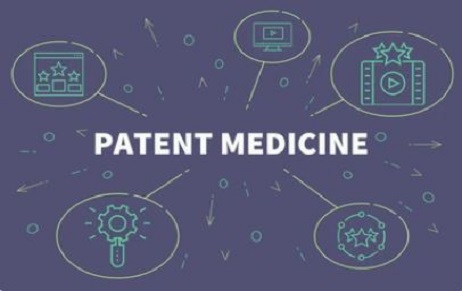INTRODUCTION Whether the Indian pharmaceutical firms are indeed innovating in developing new drugs or just…
Biotechnology and Intellectual Property: Balancing Innovation and Access to Genetic Resources
Introduction
The field of Biotechnology has been growing tremendously in the past few years, it is a dynamic field at the intersection of biology and technology, encompassing a broad range of applications aimed at improving human life and the environment.1 The UN defines Biotechnology as “any technological application that uses biological systems, living organisms, or derivatives thereof, to make or modify products or processes for specific use.”2 “One of the main features of modern biotechnology is its increasing proprietary nature, new biotechnologies are protected by patents and other intellectual property rights (IPRs).”3 “Intellectual property represents products of the mind or intellect. They are ideas that, when converted to tangible forms, can be protected.”4 Biotechdevelopment often takes a significant time and financial commitment. Thus, by obtaining IPRs, the innovator often looks to recoup his investment of time and work. They give the creator the ability to limit how their intellectual property is used.5
Until the 1970s, biodiversity was considered to be part of the “common heritage of humankind.”6 International and national gene banks were established under the shared heritage principle, and these institutions continue to function in accordance with this idea till date.7 In addition, this idea was granted legal standing in international agreements including the “1982 Law of the Sea Convention”, the “1979 Moon Treaty”, and the “1972 UNESCO Convention for the Protection of the World Cultural and Natural Heritage”. Availability, administration for the benefit of mankind as a whole, exclusive use for peaceful purposes by all governments, free and open access to scientific research, and freedom from claims of national sovereignty or private property are just a few of the many legal concerns covered by these accords.8
The genetic variety of the planet is not uniformly distributed, with the majority of it found in tropical and subtropical regions, which are home to the majority of developing nations.9 Many nations, organizations, and individuals resisted the movement for IPRs for biodiversity at the outset for a variety of reasons, the primary one being the pervasive disparity in terms of exchange between the ‘North and the South’.10 In general, the Southern region is rich in biodiversity, but in the spirit of the shared heritage, it has freely or involuntarily provided this wealth without charge. However, the North has advanced technology that allows it to make use of biodiversity. For instance, it can be used to find possible drugs or to identify traits or genes that can be incorporated into hybridized or genetically engineered improved crop cultivars. The outcomes of these efforts are now more and more protected by intellectual property rights (IPR) in developed nations.
Patenting Biotech Products
The field of biotechnology is rapidly developing in the new millennium, and it can be challenging to stay up to date with the latest advancements. Equal protection under the patent system has proven difficult for the biotechnology industry to achieve. ‘Biotechnology requires almost all patent law principles to be reconsidered and interpreted from scratch, which is a reason why so many leading patent law decisions of the last decade have resulted from biotech cases.’11 The narrow line separating invention from discovery makes it difficult to obtain patents in the biotechnology industry. The threshold issue of patentable subject matter involves balancing the economic principles of intellectual property: incentive and access. In biotechnology, it’s crucial to ensure that while specific technological applications are patentable to incentivize innovation, the fundamental scientific principles remain open for future innovators. The Kolkata High Court’s decision in the Dimminaco case affirmed the patentability of biotech innovations. One of the main concerns in biotech patenting is the fear that life itself might be patented, which raises ethical and religious objections. The 1980 ruling in the “Chakrabarty case” by the US Supreme Court established a precedent by permitting the patenting of a genetically engineered bacteria that could degrade crude oil. The Court ruled that since the bacterium was a product of human invention rather than nature, it fell within the scope of patentable subject matter. This approach emphasizes that patentable subject matter includes inventions created by humans, not naturally occurring phenomena or fundamental principles of life. The incentive for innovation outweighs concerns about restricting access, as patents encourage investment in research and development by granting exclusive rights to inventors.12 As a result of the Chakrabarty decision, various entities have obtained patents for novel creations, including the well-known Harvard mouse, which is an oncomouse engineered to be highly susceptible to carcinogens, making it valuable for cancer research.13 ‘In addition to the patentable subject matter issue, biotech product patent applications must face the four hurdles faced by all patents; the product must be novel, non-obvious, must have involved an inventive step and useful.’14 Novelty refers to the requirement that the product or invention being patented must be new, i.e., it should represent a significant departure from existing knowledge or technology. Non- obviousness addresses whether the product or invention would have been obvious to a person skilled in the relevant field at the time the patent application was filed. It must involve an inventive step that is not readily apparent to someone knowledgeable in the field, thus demonstrating a level of creativity and ingenuity. Inventive Step examines whether the product or invention involves a step beyond what is already known or obvious. Lastly, the product or invention must be useful and have a practical application. It should provide some tangible benefit or serve a specific purpose, this is its utility.
Finding a balance between promoting innovation and maintaining access to basic scientific knowledge is still crucial as biotechnology develops. The importance of human innovation in patentable subject matter is shown by recent court opinions, highlighting the continuous growth of biotech patent law. In the future, it will be crucial to make sure that patents support both the desire for advancement and the larger good of society, creating an environment that encourages innovation and benefits everyone.
Biopiracy
“The term bio-piracy describes the unapproved use of biological material and related traditional knowledge for profit, frequently without acknowledging or compensating the communities that created and preserved the information.”15 At its heart, it refers to the exploitation of traditional knowledge or genetic resources from indigenous communities or developing countries without fair compensation or recognition. Bio-piracy undermines the rights of indigenous communities and undermines the sustainable use of natural resources.16 This practice raises profound questions about equity, sovereignty, and the protection of cultural heritage. In a world increasingly dependent on biotechnological advancements, grappling with the implications of biopiracy is not just a legal or scientific issue but a deeply human one, resonating with themes of justice, respect, and collaboration.17
Traditional knowledge refers to the wisdom, customs, and beliefs handed down from ancestors to future generations within a specific group, usually shared verbally. It’s the kind of knowledge linked with indigenous peoples, vital to their culture and who they are.
A few famous Biopiracy cases, wherein Indian Traditional Knowledge has been patented by the developed countries without giving due recognition to the indigenous people-
- Turmeric Case– Turmeric rhizomes are used in Indian cooking and are prized for their flavor as well as their medicinal, cosmetic, and coloring properties. Turmeric has long been used to treat burns and wounds, but in 1995 Indian expats at the ‘University of Mississippi Medical Center’ were awarded a US patent for its wound-healing abilities. The Indian government, however, contested this patent, pointing to earlier work and providing proof of the historic medical use of In the end, the US claim Office declared the claim void in 1997, stating that turmeric’s therapeutic uses were well-established and not novel.18
Neem Case- In the Neem issue, US firms had patented the therapeutic benefits of the Neem tree in the 1990s, causing a dispute between India and the US. Despite neem oil’s long history of use in India, the European Patent Office (EPO) awarded a patent to W.R. Grace Company in 1994 for a method utilizing the oil as pesticide. India saw demonstrations in response, claiming that this was stealing traditional India contested the patent, which resulted in the EPO
revoking it in 2000 due to the absence of true innovation and the well-known qualities of neem.19
- Basmati Rice Case- The Basmati rice issue was to a legal dispute concerning the designation of Basmati rice as a Geographical Indication (GI) between the United States and India. India objected to RiceTec’s 1997 patent application for Basmati rice, which was made by the Texas- based seed firm. India accused RiceTec of biopiracy and contended that Basmati rice was native to the area. The USPTO awarded RiceTec a limited patent on specific farming techniques, eliminating essential elements of Basmati rice, in spite of India’s best India criticized this ruling, which prompted an appeal. India was successful in having the patent revoked in 2001 when the USPTO acknowledged that Basmati rice is indigenous to India and that RiceTec had been using the term “Basmati” misleadingly.20
Biopiracy is a serious problem since it refers to the exploitation of traditional biological knowledge for commercial advantage without giving credit or acknowledgment to the communities that produced and preserved it. This practice violates both the rights of indigenous populations and the principles of fair use of natural resources. The international community must work together to establish legislation that protects traditional knowledge and outlaws the theft of biodiversity.21
Ethical and Social Considerations of Biotech Patenting and Biopiracy- A Way Forward
Biotechnology patenting raises complex ethical and social considerations that intersect with access to healthcare, genetic privacy, innovation, cultural rights, environmental sustainability, social justice, and global health equity. These patents can potentially limit access to essential healthcare products, perpetuate monopolies, exploit indigenous knowledge, and exacerbate social inequalities. 22Firstly, policymakers must ensure that IP laws create a balance between incentivizing innovation and promoting public access to essential technologies. This can involve implementing mechanisms such as compulsory licensing or patent pools to ensure affordability and accessibility. Encouraging cooperation and open science can reduce the harmful impacts of monopolies and promote innovation. Furthermore, in order to ensure that biotechnological advances adhere to the values of social justice and environmental sustainability, efforts should be made to incorporate ethical considerations into their research and commercialization.

The Biological Diversity Act of 2002 should be revised to permit anyone to bring lawsuits to the High Court regarding issues such as biopiracy, unauthorized use of biological resources, and infringement of indigenous people’s inventions and Biological Diversity norms. These lawsuits could seek injunctions to prevent unlawful usage before it occurs, rather than only seeking recourse after the fact. State governments need to prioritize the conservation of natural resources, along with the preservation of related traditional knowledge and the rights of the communities that possess them. There’s a necessity for clearer legislation in certain areas to safeguard indigenous rights and protect indigenous knowledge. Given the lack of legal experts specializing in traditional knowledge, it’s essential to establish special tribunals dedicated to resolving disputes concerning traditional knowledge efficiently. These tribunals should include experts to expedite the process and prevent large corporations from obtaining patents through unethical means.
Author: Arya Mishra, A Student at Maharashtra National Law University, Nagpur, in case of any queries please contact/write back to us via email to chhavi@khuranaandkhurana.com or at Khurana & Khurana, Advocates and IP Attorney.
1 Kavanagh, Camino. “Biotechnology.” ‘New Tech, New Threats, and New Governance Challenges: An Opportunity to Craft Smarter Responses?’ Carnegie Endowment for International Peace, 2019.
2 United Nations, “Convention on Biological Diversity,” Article 2: Use of Terms, https://www.cbd.int/convention/articles/default.shtml?a=cbd-02.
3 Sachin Chaturvedi, “Dynaimcs of Biotechnology Research and Industry in India: Statistics, perspectives and Key Policy Issues”, 35-62 (Organisation for Economic Cooperation and Development, 2006).
4 T. Ramakrishna, “Innovation, Invention in Biotechnology and Intellectual Property Rights Law: Can India Catch The Bus” (3rd Edition, 2008).
5 Janice M. Mueller, “Biotechnology Patenting in India: Will Bio-Generics Lead a ‘Sunrise Industry’ to BioInnovation” (No. 2, 2008 ed. University of Missouri-Kansas City Law Review 2008).
6 Herdt RW (1999) “Enclosing the global plant genetic commons”.
7 Shands HL, Stoner AK (1997) “Agricultural germplasm and global contributions”. In KE Hoaglund, AY Rossman, eds, Beltsville “Symposia in Agricultural Research: Global Genetic Resources: Access, Ownership, and Intellectual Property Rights. Association of Systematics Collections”, Washington, DC, pp 97–106.
8 Paul Gepts, “Who Owns Biodiversity, and How Should the Owners Be Compensated?”, 2004 Apr; 134(4): 1295– 1307.
9 Williams PH, Gaston KJ, Humphries CJ (1997), “Mapping biodiversity value worldwide: combining higher-taxon richness from different groups.” Proc R Soc Lond B Biol Sci 264: 141–148.
10 Supra note 8 at 2.
11 “Diamond v Chakrabarty”, 447 US 303 (1980) (patentable subject matter); In re Bell, 991 F.2d 781 (Fed. Cir. 1993)
(obviousness); In re Vaeck, 947 F.2d 488 (Fed.Cir. 1991) (enablement); ‘Fiers v Revel’, 984 F.2d 1164 (Fed Cir. 1993) (Conception).
12 P. K. Vasudeva. “Patenting Biotech Products: Complex Issues.” Economic and Political Weekly 35, no. 42 (2000): 3726–29.
13 Leder P and Stewart T, “Transgenic Non-Human Mammals”, US Pat 4,736,866 (1988).
14 “Amgen Inc v Chugai Pharmaceutical Co”, 13 USPQ2d 1737 (D Mass. 1989), 927 F.2d 1200 (Fed. Cir.1991).
15 Shahnaz Kaushar, “ Bio-Piracy In India: A Practice Of Patenting Traditional Knowledge For Profit”, IPR Journal of Maharashtra National Law University, Nagpur Volume I | Issue I | June 2023, pp. 54-61.
16 Shiva, Vandana. “Bioprospecting as Sophisticated Biopiracy.” Signs 32, no. 2 (2007): 307–13.
17 Reid, John. “Biopiracy: The Struggle For Traditional Knowledge Rights.” American Indian Law Review 34, no. 1 (2009): 77–98.
18 Turmeric Case (Judgement) [1997] U.S. Patent No. 5401,504.19 Neem Patent Case (Judgement) [2000] E.P.O. Patent No. 436257.
20 India-US Basmati Rice dispute, [2001], U.S. Patent No 5663484 A.
21 Supra note 15 at 4.
22 V. Manoj. “Patents on Life, India and the TRIPs Mandate.” Economic and Political Weekly 33, no. 4 (1998): 152–55.
http://www.jstor.org/stable/4406315.



